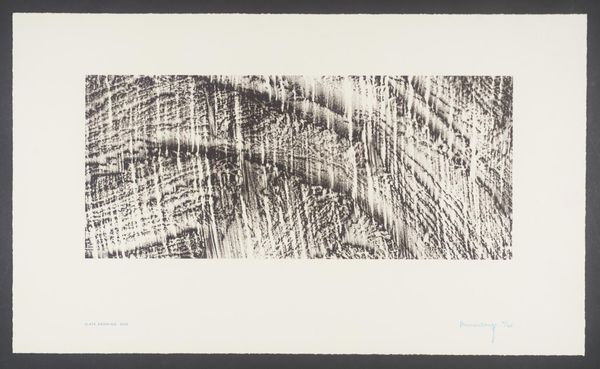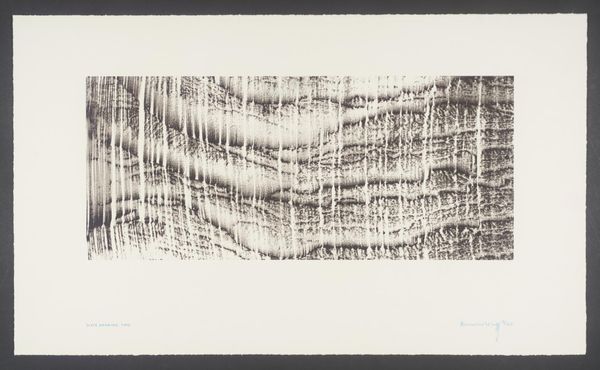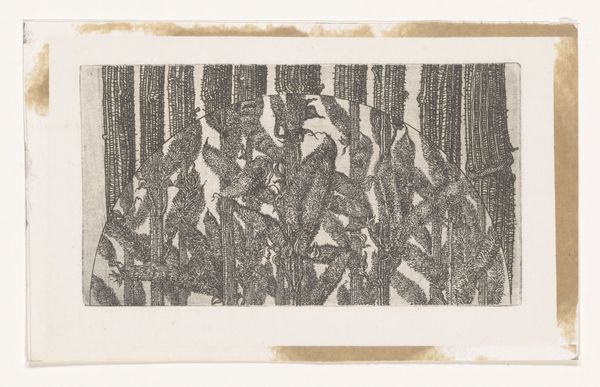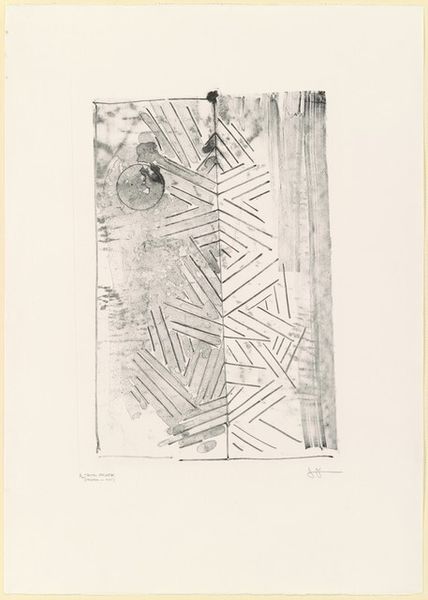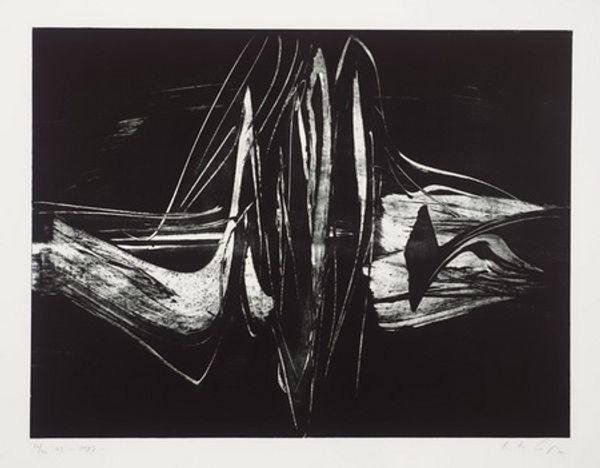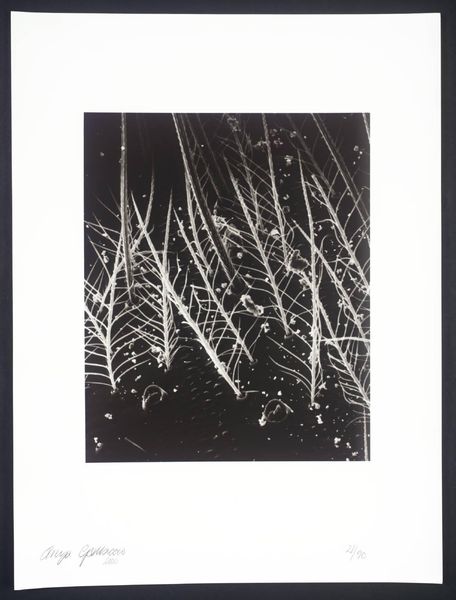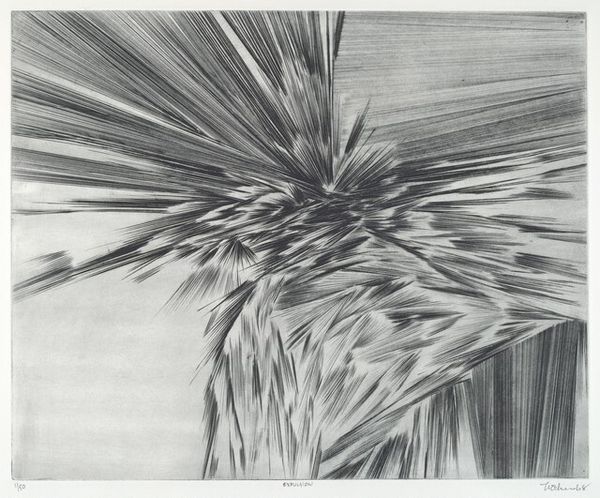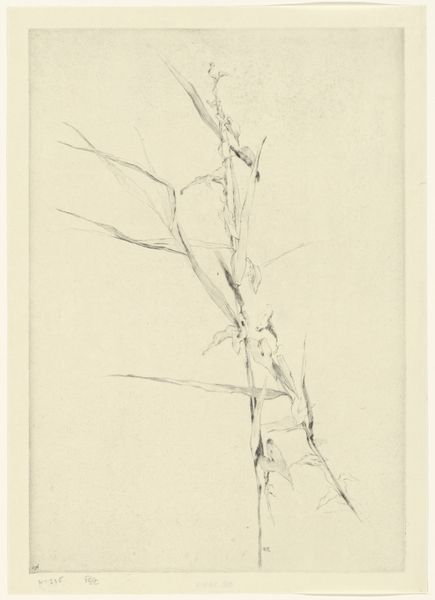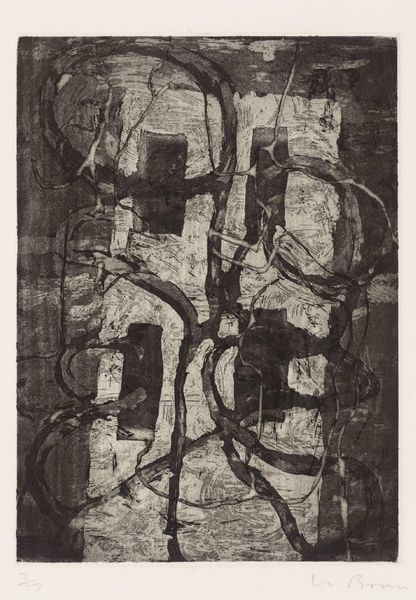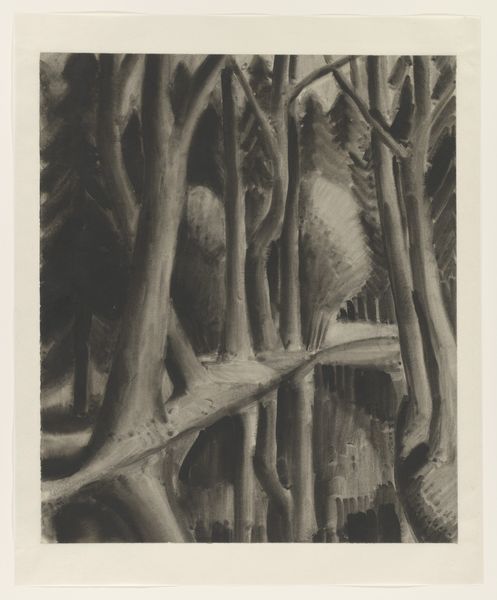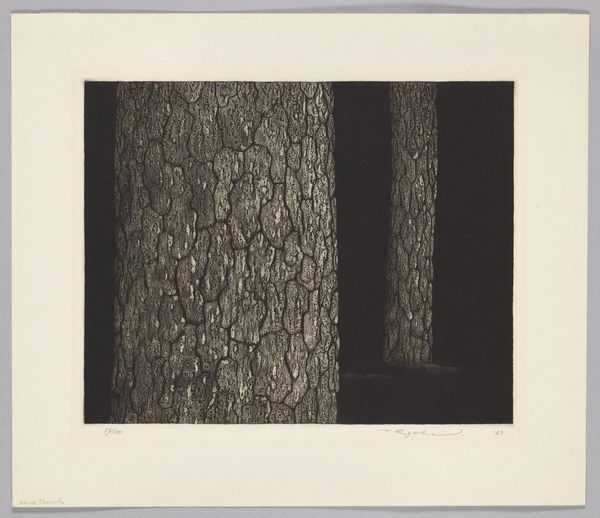
Dimensions: image: 240 x 500 mm
Copyright: © Richard Long | CC-BY-NC-ND 4.0 DEED, Photo: Tate
Curator: Richard Long, born in 1945, created "Limestone Drawing One." It's currently housed in the Tate Collections and showcases a direct engagement with natural materials. Editor: There's a rawness to it, almost violent in its simplicity. The stark contrasts evoke a sense of geological upheaval. Curator: Indeed. Long’s practice often involves physically interacting with landscapes, and that transfers here. Note the direct application of the limestone, bypassing traditional artistic tools. This challenges established hierarchies of artistic labor. Editor: It does read as a commentary on our relationship with the environment, doesn't it? The lines almost feel like fault lines, reminders of the earth's power and our relative insignificance. Curator: Absolutely. And by bringing these materials indoors, he forces us to reconsider our consumption of the land itself. It's not just about aesthetics; it's about production. Editor: It certainly encourages a deeper consideration about both the materiality of art, and our place within larger ecological narratives. Curator: Precisely, seeing how Long's labor is directly tied to the land is a worthwhile consideration. Editor: A valuable reminder to remain alert, and awake, to the reality of our natural world.
Comments
tate 6 months ago
⋮
http://www.tate.org.uk/art/artworks/long-limestone-drawing-one-p78719
Join the conversation
Join millions of artists and users on Artera today and experience the ultimate creative platform.
tate 6 months ago
⋮
This is one of a suite of four screenprints (see Tate P78717-18 and P78720) Long made from direct contact with the surfaces of slabs of slate and limestone. Limestone Drawing One, as its title indicates, is based on a pencil rubbing taken from textured limestone. The drawing was turned into a screenprint using a photo-separation process and printed using repeated additions of ink until the image had reached the tonal balance required by the artist. The portfolio was printed by Advanced Graphics, London and published by Ridinghouse Editions, London, in an edition of forty plus ten artist’s proofs. Tate’s copy is the seventh in the edition.

